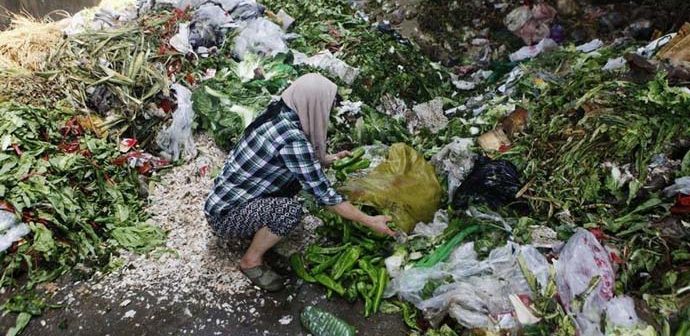India, a land of vibrant culture and abundant harvests, grapples with a harsh reality – rampant food wastage. While millions struggle with hunger, a staggering portion of the food produced never reaches a plate. This article delves into the depths of this national issue, exploring its impact on the Indian economy and its citizens.
The Magnitude of the Problem: A Shocking Harvest of Waste
Estimates suggest that a colossal 40% of food produced in India is lost or wasted [1]. This translates to a mind-boggling 68.76 million tonnes annually, equivalent to nearly 7% of the global total [2]. Wastage occurs at various stages of the food supply chain, from farm to fork. Post-harvest losses due to inadequate infrastructure, improper storage, and inefficient transportation systems account for a significant portion of the waste [3]. Additionally, inefficiencies in food processing, distribution networks, and retail outlets contribute further. At the consumer level, factors like over-purchasing, poor storage practices, and unrealistic cosmetic standards also lead to significant wastage.
The Economic Cost: A Drain on Resources and Growth
Food wastage isn’t merely a humanitarian crisis; it’s a severe economic burden. The annual value of wasted food in India is estimated to be a staggering ₹50,000 crores (US$7.2 billion) [4]. This represents a significant loss of resources that could be channeled into vital areas like infrastructure development, healthcare, and education. Furthermore, wasted food translates to wasted inputs – water, fertilizers, pesticides, and labor – used in its production. This not only strains natural resources but also impacts the livelihoods of millions of farmers and agricultural workers. The environmental cost is equally concerning. Food waste decomposes in landfills, releasing methane, a potent greenhouse gas with a 25 times greater warming effect than carbon dioxide over a 100-year period.
The Human Cost: Hunger Amidst Plenty
The irony of food wastage in a nation where millions struggle with hunger is a stark reminder of the existing inequalities. According to reports, approximately 194.4 million people in India suffer from chronic undernourishment [5]. This translates to nearly 14.3% of the population not receiving adequate nutrition, leading to health issues like stunting, wasting, and micronutrient deficiencies. Children are particularly vulnerable, facing stunted growth and impaired cognitive development due to malnutrition. The wasted food could easily bridge the hunger gap, ensuring a healthier and more productive population.
Addressing the Challenge: A Multi-Pronged Approach
Combating food wastage requires a multi-pronged approach that addresses inefficiencies at various stages of the food supply chain. Here are some potential solutions:
- Infrastructure Upgrade: Investing in modern storage facilities, cold chain infrastructure, and improved transportation networks can significantly reduce post-harvest losses.
- Technological Advancements: Adopting advanced techniques like precision farming and smart packaging can optimize resource utilization and extend shelf life.
- Awareness Campaigns: Educating farmers, consumers, and retailers about responsible food management practices is crucial for behavioral change.
- Policy and Regulation: Government intervention through policy and regulatory frameworks can incentivize sustainable food practices across the supply chain.
- Public-Private Partnerships: Collaborative efforts between government and private entities can create innovative solutions and foster greater accountability.
- Food Banks and Redistribution Networks: Strengthening food banks and redistribution networks can ensure surplus food reaches those in need.
Conclusion: A Call to Action for a More Sustainable Future
Food wastage is a complex issue with profound economic, social, and environmental consequences. India can ill-afford the luxury of letting perfectly good food go to waste while millions face hunger. A collective effort from policymakers, industry leaders, and citizens is essential to tackle this challenge. By investing in infrastructure, promoting awareness, and adopting sustainable practices, India can pave the way for a more efficient food system and a future where no one goes hungry amidst plenty. This isn’t just about economic efficiency; it’s about ensuring food security, promoting a healthy nation, and building a more sustainable future for all.




